Rob Bignell's Blog, page 321
September 26, 2014
What is a ‘platform’ when promoting a book?
One question  I frequently receive from editing clients who’ve just self-published their books is “What is a platform?” The word is bantered about a lot on self-publishing blogs and in guides about marketing books, but it’s rarely ever defined.
I frequently receive from editing clients who’ve just self-published their books is “What is a platform?” The word is bantered about a lot on self-publishing blogs and in guides about marketing books, but it’s rarely ever defined.
A platform is the combination of all the tools you use so people become aware of your book and purchase it. Typically it consists of a website, a blog, social media (particularly Goodreads, Twitter, YouTube, Facebook, LinkedIn and Pinterest), and website pages where your book is for sale (such as Amazon.com, CreateSpace and Smashwords). Essentially, the platform is a way for you to reach others; it also is a way for others to stumble upon your book when using a search engine across the Internet or at a specific website.
Some marketing gurus would expand the definition to include any effort you make so that people are aware of your book. This could include press releases to the media, appearances on radio and television programs, book readings/signings, speaking engagements, handing out a business card, and so on. While these efforts do allow people to find out that you have a book and to purchase it, those efforts are much more ephemeral than my more limited definition of a platform. After all, so long as you don’t remove your website and Amazon.com page, they are always there for someone to discover. In contrast, once you’re done with the book signing, the opportunity that was offered for someone to stumble across your book disappears.
How important is a platform? Some authors trying to peddle gimmicks will say it’s entirely unimportant. Mot authors (including myself) disagree. A platform is absolutely vital to your success, especially over the long haul. However, the elements that make up your platform, how you utilize the tools in your platform, and the frequency that you use those tools varies greatly from book to book. There is no single formula that works for every title; rather, it varies depending on your potential readership, your sales goals, and how effective you are at utilizing each tool.
Need an editor? Having your book, business document or academic paper proofread or edited before submitting it can prove invaluable. In an economic climate where you face heavy competition, your writing needs a second eye to give you the edge. Whether you come from a big city like Denver, Colorado, or a small town like Dewey Beach, Delaware, I can provide that second eye.
<A HREF="http://ws-na.amazon-adsystem.com/widg... Widgets</A>Related articles
 How to determine your book's price
How to determine your book's price Distribute ebook on variety of ereaders, tablets
Distribute ebook on variety of ereaders, tablets Utilize online storefronts to promote your book
Utilize online storefronts to promote your book
September 25, 2014
Guidelines for creating an ebook cover
Despite the 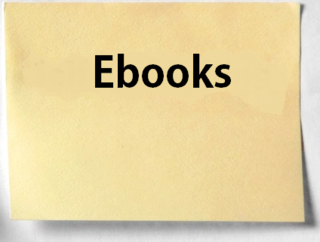 old adage, people will judge your book by its cover. As humans are visually-oriented, the first thing a potential buyer of your book will spot on a web page is your cover; almost always the words come later. In addition, that cover typically will just be a thumbnail.
old adage, people will judge your book by its cover. As humans are visually-oriented, the first thing a potential buyer of your book will spot on a web page is your cover; almost always the words come later. In addition, that cover typically will just be a thumbnail.
Given this, there are several principles of ebook cover design you should follow:
g Use a sharp, quality picture of a single, recognizable object – That means ensuring the photo is at least 300 dpi and slightly larger than the size that must be uploaded when you self-publish. If you go with a lower dpi or a smaller size, the photo will appear pixelated or blurry. In addition, since the cover potential buyers will see is literally the size of your thumb, the illustration or photograph on the cover should not be complex or detailed. All of that simply will get lost in the small size and look like colors splattered on the screen.
g Properly crop and touch-up the picture – The picture needs to be shaped so that it is proportionately the same as the thumbnail. If the thumbnail is two inches tall by an inch wide, then the photo itself needs to be twice as tall as it is wide; a photo that is three times as tall as it is wide won’t work and will need to be cropped. Further, don’t distort (or change the aspect ratio) of the picture to force it to fit the thumbnails dimensions. Finally, if you’ve taken the photo yourself, ensure its coloration is good and that red-eye is removed.
g Leave space on the photograph for the text – Decide in advance where the title, subtitle and byline (the author’s name) will go on the cover. The object in the picture should not be covered (or at least mostly not be covered) by the text. For example, if the cover photo is of a sunflower, leave a sufficient amount of blue sky above the blossom where the title can go and some mostly mono-colored grass below the blossom where the byline can be placed.
g Use readable and large fonts – Avoid fancy fonts, especially those that are italicized, in Old English or gimmicky (like Comic Sans) for your cover’s text. There may be instances when those fonts would work, but rarely can they be read on a thumbnail. Instead, opt for an easy-to-read font and place them in boldface to stand out.
g Limit wording on the cover – The book’s title, subtitle, and a byline is all that’s needed for an ebook. Any more just clutters the cover and forces you to make the text smaller, thereby ensuring it is more difficult to read.
g Make the title the largest lettering – If the picture and overall cover design is attractive, then a potential buyer will notice the title. Help them find the title by ensuring it is larger than the subtitle and the byline. The only time to make a byline larger than a title is if you are a famous author whose name is a household word.
g Arrange text so it reads right to left – Avoid having lettering reading north to south or scrambled about on a page. Remember that potential buyers will view and read the thumbnail very quickly, so the more difficult the text is to read, the more quickly they’ll move on to another author’s book.
g Avoid color clash – Use contrasting colors. The text lettering should stand out against the picture. If the spot on the picture where the lettering will go is light or bright, use dark text and vice versa. If placing your text on a black background, use a light hue that is an accent color in your picture. Also avoid changing the color of each word or sets of words within the title, subtitle and byline. Keep to one color.
g Leave “by” off the byline – The only name that ought to appear on the cover is the author’s, so why place “by” before it? Besides adding clutter to the page, it looks amateurish.
These guidelines also apply to paper book covers – particularly those sold exclusively online – but generally you do have a little more leeway with the picture’s complexity on the larger cover.
Need an editor? Having your book, business document or academic paper proofread or edited before submitting it can prove invaluable. In an economic climate where you face heavy competition, your writing needs a second eye to give you the edge. Whether you come from a big city like San Diego, California, or a small town like Eek, Arkansas, I can provide that second eye.
<A HREF="http://ws-na.amazon-adsystem.com/widg... Widgets</A>Related articles
 How your text should appear in a formatted book
How your text should appear in a formatted book Consider differences between paper, ebooks
Consider differences between paper, ebooks Does your book cover design matter for ebooks?
Does your book cover design matter for ebooks?
September 24, 2014
For convenience sake: How should it appear?
For heaven’s 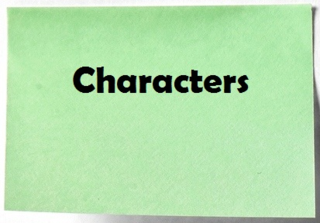 sake, why didn’t somebody teach how to spell and punctuation this expression to some writers? Probably because it’s one of those rules in flux.
sake, why didn’t somebody teach how to spell and punctuation this expression to some writers? Probably because it’s one of those rules in flux.
Most writers learned that any time a possessive is used, an apostrophe is needed. As the expression shows that sake belongs to convenience, it ought to be spelled/punctuated for convenience’s sake, right?
Not exactly. The use of sake allows for two exceptions to the above rule. First, if the word coming before sake ends in an ss, most speakers would find it difficult to say aloud, and it sure would look darn ugly on the page or screen, so the ’s is dropped. Hence, we write for goodness sake and not for goodness’s sake. Secondly, if the word coming before sake is more than a couple of syllables long and ends in ce, most speakers likewise find it awkward to say and so the ’s is dispensed with. Hence, we write for convenience sake. In all other cases – such as for Pete’s sake or for God’s sake – include the ’s.
Of course, not all speakers (and therefore readers) find adding that ’s particularly difficult to say. So they say it. And then some authors write it. Ultimately, this is one of those grammatical rules in flux, and increasingly dictionaries and grammar guidebooks are allowing for either spelling/punctuation as acceptable, standard English.
As a writer, you can avoid the matter by revising the phrase to for the sake of convenience. Otherwise, stick to the original rule of no ’s or whatever the style guide of your publishing house advises.
Need an editor? Having your book, business document or academic paper proofread or edited before submitting it can prove invaluable. In an economic climate where you face heavy competition, your writing needs a second eye to give you the edge. Whether you come from a big city like Atlanta, Georgia, or a small town like Atlanta, Idaho, I can provide that second eye.
<A HREF="http://ws-na.amazon-adsystem.com/widg... Widgets</A>
Related articles
 Mastering the fine art of dialogue punctuation
Mastering the fine art of dialogue punctuation How self-edit and revise your fiction story
How self-edit and revise your fiction story
September 23, 2014
Utilize milepost character to critique concepts
Sometimes to 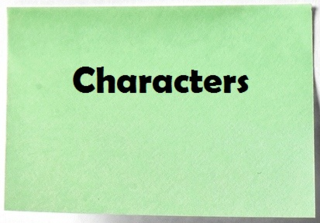 critique an idea in a story, you might employ a milepost character. This is a character who never changes though the main character’s perspective of him does. It’s a term coined by David Smith in an article for the Science Fiction and Fantasy Writers of America.
critique an idea in a story, you might employ a milepost character. This is a character who never changes though the main character’s perspective of him does. It’s a term coined by David Smith in an article for the Science Fiction and Fantasy Writers of America.
Suppose, for example, that you wanted to show how the idea of materialism is a bad concept. You might personify that idea through a milepost character, say a banker at a larger corporate financial institution. The banker could enjoy a life in which he wears the best clothing, drives the best cars, and owns the largest of houses.
At first, the focus character – who is a new employee at the bank – might admire the banker, who compliments him and is courteous to others. As the story evolves, however, the focus character may learn more about the banker, maybe catching the latter in a moment of criticizing the poor or turning down a house loan for a hard-working single mother. The focus character might chalk up the former to drink and the latter to “That’s business,” but it taints his perspective. Perhaps when the banker decides to foreclose on a long-time friend who’s missed two payments, the focus character’s views of what qualities are the best in humanity continues to transform. In this way, the reader along with the focus character begins to question the value of materialism.
In addition to critiquing an idea, the milepost character offers the obvious advantage of showing how the focus character is growing and developing. As if a scientific experiment, the reader now can use the milepost character as a basis of comparison with the focus character’s perspectives.
When creating a milepost character, avoid creating a flat stereotype. While the milepost character doesn’t grow, there ought to be good reasons for his motivations and actions (In the above example, for example, the banker might argue that he can’t help everyone or the institution would collapse, and that would be bad for the community overall, as the bank helps create businesses that employ people.). Rather than be a comic character (unless writing humor, of course), the milepost character can be somewhat tragic, a prisoner of his own inability to change or escape the trappings of the idea he personifies.
Need an editor? Having your book, business document or academic paper proofread or edited before submitting it can prove invaluable. In an economic climate where you face heavy competition, your writing needs a second eye to give you the edge. Whether you come from a big city like Minneapolis, Minnesota, or a small town like Nothing, Arizona, I can provide that second eye.
<A HREF="http://ws-na.amazon-adsystem.com/widg... Widgets</A>Related articles
 Create successful story by staging it
Create successful story by staging it Select a viewpoint that gives you flexibility
Select a viewpoint that gives you flexibility Cut plot cliché of histrionic exit
Cut plot cliché of histrionic exit
September 22, 2014
Cut plot cliché of histrionic exit
To ensure 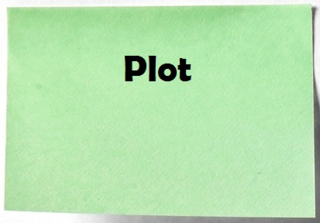 readers hold your story in high regard, you’ll want to avoid plot clichés, or overused literary devices, which typically are employed by lazy or unskilled writers.
readers hold your story in high regard, you’ll want to avoid plot clichés, or overused literary devices, which typically are employed by lazy or unskilled writers.
One such plot cliché is the histrionic exit. This involves punctuating the end of a scene with a physical action aimed at evoking an emotional response in the reader. For example, after an argument between two characters, when one of them leaves he slams the door. The reader then would say, “Wow! That character is really angry!” The term was coined by CSFW’s David Smith.
Usually the writer includes a histrionic exit to make up for a lack of style in the scene. In the above example, as the writer fears that the argument didn’t sufficiently show the character’s anger, the physical action was added, like an exclamation point to a sentence.
The solution is to delete the physical action and fix the scene so the characters’ anger is apparent to readers. In the above case, the character might make cutting remarks or a description of them being angry, such as balling their hands into fists, could be included.
Need an editor? Having your book, business document or academic paper proofread or edited before submitting it can prove invaluable. In an economic climate where you face heavy competition, your writing needs a second eye to give you the edge. Whether you come from a big city like San Jose, California, or a small town like Boar Tush, Alabama, I can provide that second eye.
<A HREF="http://ws-na.amazon-adsystem.com/widg... Widgets</A>Related articles
 Think of your story as if a stage production
Think of your story as if a stage production Coax readers to eat your story's veggies
Coax readers to eat your story's veggies Shun beautiful writing done for beauty's sake
Shun beautiful writing done for beauty's sake
September 21, 2014
Five Great Quotations about Readers
“If you try 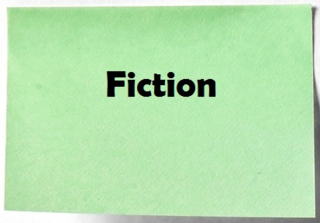 to please audiences, uncritically accepting their tastes, it can only mean that you have no respect for them: that you simply want to collect their money.” – Andrei Tarkovsky
to please audiences, uncritically accepting their tastes, it can only mean that you have no respect for them: that you simply want to collect their money.” – Andrei Tarkovsky
“In the tale, in the telling, we are all one blood. Take the tale in your teeth, then, and bite till the blood runs, hoping it’s not poison; and we will all come to the end together, and even to the beginning: living, as we do, in the middle.” – Ursula K. Le Guin
“That’s the essential goal of the writer: you slice out a piece of yourself and slap it down on the desk in front of you. You try to put it on paper, try to describe it in a way that the reader can see and feel and touch. You paste all your nerve endings into it and then give it out to strangers who don’t know you or understand you.” - Stephen Leigh
“I’m the kind of writer that people think other people are reading.” – V. S. Naipaul
“A person who publishes a book willfully appears before the populace with his pants down...If it is a good book nothing can hurt him. If it is a bad book, nothing can help him.” – Edna St. Vincent Millay
Need an editor? Having your book, business document or academic paper proofread or edited before submitting it can prove invaluable. In an economic climate where you face heavy competition, your writing needs a second eye to give you the edge. Whether you come from a big city like Birmingham, Alabama, or a small town like Buttzville, New Jersey, I can provide that second eye.
<A HREF="http://ws-na.amazon-adsystem.com/widg... Widgets</A>Related articles
 Watch for consistency errors in your story
Watch for consistency errors in your story Crack a joke - but only for a good reason
Crack a joke - but only for a good reason Place commas inside quotation marks
Place commas inside quotation marks Five Great Quotations about Readers
Five Great Quotations about Readers
September 20, 2014
Time spent writing is a productive time
All too 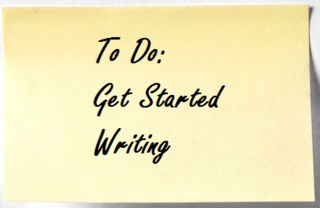 often novice writers tell themselves, “I should be doing something else other than writing.” Maybe it’s folding laundry, maybe it’s working on the project for your employers, maybe it’s just relaxing.
often novice writers tell themselves, “I should be doing something else other than writing.” Maybe it’s folding laundry, maybe it’s working on the project for your employers, maybe it’s just relaxing.
Such thinking isn’t very helpful to your writing. You either go do that other task (and there always are a thousand other tasks one could do) or you spend your writing time not thinking about your book but that other thing you instead might be doing.
You never can be a successful writer, though, if you don’t write. And why would you want to defer your dream?
A satisfying life demands that you possess purpose and passion. To be an author is your purpose. Writing is your passion.
Pursuing any passion and achieving any goal requires effort. If your passion is running and your purpose is to complete a marathon, and must practice and work your way up in handling the miles you traverse each day. You don’t just run a marathon the first time out.
So it is with writing. You don’t write the Great American Novel or the next bestselling self-help book with a single draft. Instead, you must learn the craft of writing and revise your works. Each time you write, you incrementally become better and get closer to the finish line.
Folding the laundry, completing another project at work, or watching television for the next hour doesn’t build your writing muscles. It only leaves them flabby.
Need an editor? Having your book, business document or academic paper proofread or edited before submitting it can prove invaluable. In an economic climate where you face heavy competition, your writing needs a second eye to give you the edge. Whether you come from a big city like Miami, Florida, or a small town like Normal, Illinois, I can provide that second eye.
<A HREF="http://ws-na.amazon-adsystem.com/widg... Widgets</A>Related articles
 Crack a joke - but only for a good reason
Crack a joke - but only for a good reason You must always be ready to write
You must always be ready to write Avoid card tricks in the dark when writing
Avoid card tricks in the dark when writing Avoid exposition (Show, don't tell!)
Avoid exposition (Show, don't tell!)
September 19, 2014
Promote your book by guest blogging
A great  way to promote your book is by guest blogging, which is writing, for free, content that appears on another person’s blog. It’s sort of like being a guest host of a television program.
way to promote your book is by guest blogging, which is writing, for free, content that appears on another person’s blog. It’s sort of like being a guest host of a television program.
Most bloggers are more than happy to post your guest blog, as it reduces their workload and gets other readers (specifically those who follow you social media, because you’ll promote your guest blog) to take a look at their site. Some may ask that they have the opportunity to guest blog on your site in an exchange.
Guest blogging is a natural promotion tool for authors of nonfiction books. Simply write about topics that your book(s) address – bonus points if you can connect them to what’s current in the news or industry. Novelists, short story writers and poets also can find material to pen, though. It might involve tips for writing in your genre, self-publishing or promoting your book, or a nonfiction article about a topic that plays an important role in your book (such as creating a scientifically-plausible FTL device if you wrote a space opera novel).
Get started by listing a dozen or so blogs related to your book’s topic. For example, if you wrote a book about day hiking with children, blogs about hiking and parenting would work.
Next, make a list of a half-dozen or so topics that you might write about for those blogs. Make sure that those topics haven’t been covered in at least six months to a year on those blogs (And even then, that may be too soon for a blogger to post about it.).
Contact each of the blog owners via email to see if they would be interested in your guest blog. Include your list of topics with the email and ask which one they would prefer.
If they give you a green light on a topic, cross it off your list and get to writing the blog. Make sure you follow their blog rules for length and format. Also, don’t go heavy on plugging your book in the article; you can mention your book but always do so in relation to your topic, which should be the focus of the blog. You might even save the book mention for the blurb about who you are that appears at the end of the blog.
Note that you didn’t pen the blog until after the idea was accepted. Don’t waste your time writing a guest blog that never gets accepted, unless you can, of course, post it on your own blog later. In any case, you want to tailor your blog to the guest blogger’s readership, and you can’t do that until you know who you’re writing for.
Also, write a unique blog for each site. Most bloggers don’t want to run something that appeared elsewhere and likely will reject your article if you submit it (or be very upset with you if finding out afterward that it ran elsewhere).
Always promote your guest blog on your various social media. Don’t worry about this driving away readers from your blog. In fact, it’ll do the opposite. Readers will hold you in higher esteem if you’re guest blogging. The guest blog site owner also will appreciate your efforts and likely invite you to write another article.
Limit the number of a guest blog posts to any one site, however. As the number of readers at most blogs rotates slowly, any more than a single guest post a year at just means you’re hitting the same potential buyers of your book who already had the opportunity to make a purchase.
Need an editor? Having your book, business document or academic paper proofread or edited before submitting it can prove invaluable. In an economic climate where you face heavy competition, your writing needs a second eye to give you the edge. Whether you come from a big city like Cleveland, Ohio, or a small town like Roachtown, Illinois, I can provide that second eye.
<A HREF="http://ws-na.amazon-adsystem.com/widg... Widgets</A>Related articles
 How often should you blog to promote your book?
How often should you blog to promote your book? Draw attention to book via article directories
Draw attention to book via article directories Writers can blog about variety of topics
Writers can blog about variety of topics What authors can write for blog entries
What authors can write for blog entries How long and frequent should author's blog be?
How long and frequent should author's blog be?
September 18, 2014
Obtain DBA if creating your own imprint
If creating 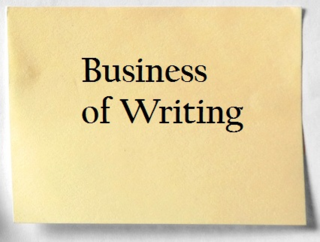 your own imprint (i.e. publishing company) when self-publishing a book, one of the first actions you’ll have to take is registering your company’s name. Because the author and publishing company are essentially the same, you don’t need to set up a full-blown company but can simply file a DBA – or Doing Business As – statement with the appropriate local officials.
your own imprint (i.e. publishing company) when self-publishing a book, one of the first actions you’ll have to take is registering your company’s name. Because the author and publishing company are essentially the same, you don’t need to set up a full-blown company but can simply file a DBA – or Doing Business As – statement with the appropriate local officials.
The DBA essentially states that you the author are a sole proprietorship who owns and operates a business that has a different name than your given name. So, if John Smith the author self-publishes his books via his own company, City of Angels Publishing, then John Smith is doing business as City of Angels Publishing. In some states, counties, and cities, the equivalent is filing a Trade Name Registration (TNR) or a Fictitious Business Name (FBN) statement.
The main advantage of a DBA is image. In an era where self-publishing is still considered by a some to be no better than vanity publishing, establishing a self-publishing company creates the fiction that a publisher separate from you picked up your book.
Once filing a DBA, however, you enter the murky waters of whether you’re running a separate business and all that entails legally and tax-wise. For example, you may need to keep separate checking accounts (one for your personal use and one for your publishing company) so your royalties can be deposited in a bank. So long as you don’t incorporate your business and remain a sole proprietorship, however, you generally can file your publishing company’s royalties as personal income tax while taking advantage of some business deductions; this is known as pass-through taxation and is quite common.
Each state has different filing requirements for a DBA. In a few of them, if the name of your publishing company is virtually the same as your own name (e.g. your name is Jane Smith and the publishing company’s name is Jane Smith Publishing), then a DBA doesn’t need to be filed. In other states, a DBA is filed with the county or city you reside in rather than with the state. In addition, you may need to obtain other licenses for your publishing company. Finally, most jurisdictions require that the DBA be printed for a few consecutive weeks as a legal in a local newspaper.
Always check with your local county/city clerk’s office and secretary of state’s office to learn how a DBA affects you. The summary provided here is only a general overview of DBA.
Need an editor? Having your book, business document or academic paper proofread or edited before submitting it can prove invaluable. In an economic climate where you face heavy competition, your writing needs a second eye to give you the edge. Whether you come from a big city like Phoenix, Arizona, or a small town like Last Chance, Idaho, I can provide that second eye.
<A HREF="http://ws-na.amazon-adsystem.com/widg... Widgets</A>Related articles
 What is an 'imprint' in self-publishing?
What is an 'imprint' in self-publishing? Value of creating your own publishing company
Value of creating your own publishing company Shun beautiful writing done for beauty's sake
Shun beautiful writing done for beauty's sake
September 17, 2014
No worries: Nerve-racking vs. nerve-wracking
No doubt this pair of phrases at one time or another has given you a headache: Is it nerve-racking or nerve-wracking?
Rack, as a noun, refers to framework; to wit, He placed his rifle on the gun rack. As a verb, rack means to torture or torment; for example, She racked her brain trying to come up with a solution.
Wrack, as a noun, means ruin or destruction. Generally, the only times to use wrack are in the phrases wrack and ruin, wracked with doubt, and wracked with pain.
So unless you mean that a situation was so anxiety-ridden that it literally destroyed a person’s brain, use nerve-racking.
Need an editor? Having your book, business document or academic paper proofread or edited before submitting it can prove invaluable. In an economic climate where you face heavy competition, your writing needs a second eye to give you the edge. Whether you come from a big city like Houston, Texas, or a small town like Weed, California, I can provide that second eye.
<A HREF="http://ws-na.amazon-adsystem.com/widg... Widgets</A>
Related articles
 When to use affect vs. effect
When to use affect vs. effect Tighten writing by cutting begin fallacy
Tighten writing by cutting begin fallacy



